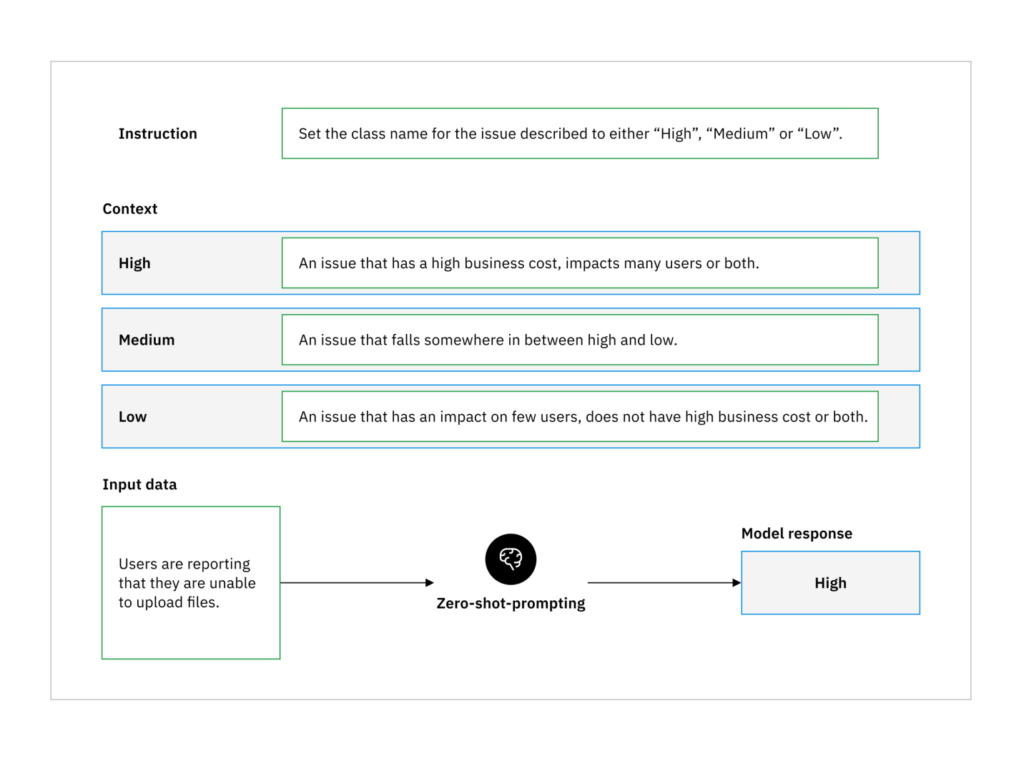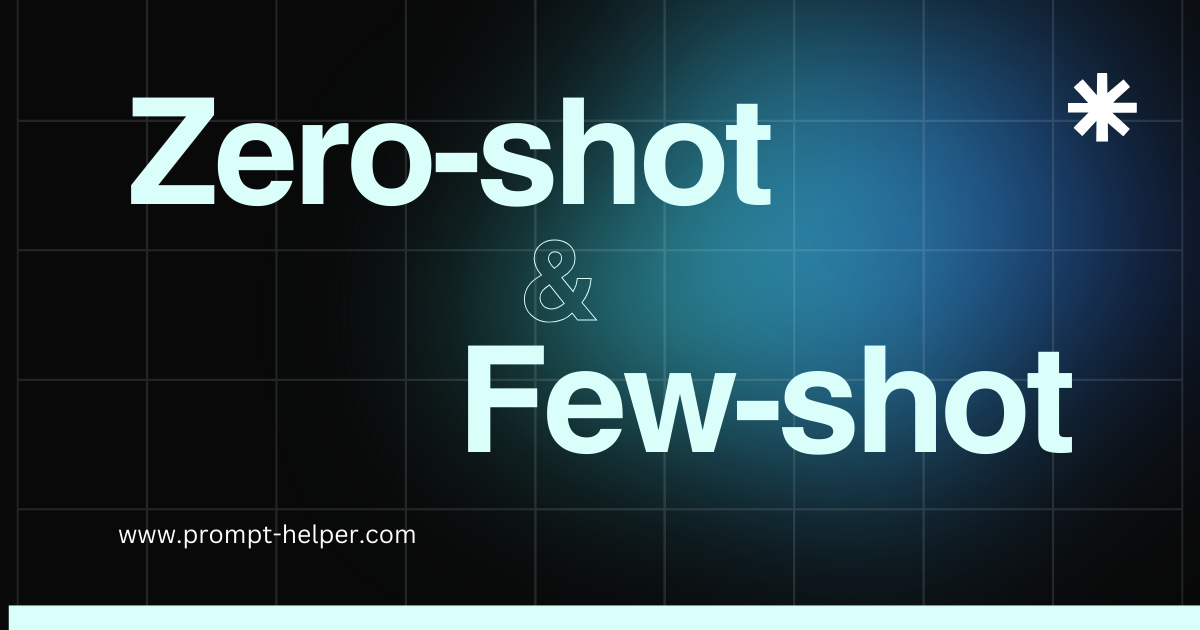Introduction
Artificial Intelligence (AI) has revolutionized problem-solving and content generation, but the quality of AI outputs heavily depends on how you structure your prompts. Among the most powerful techniques in prompt engineering are Zero-Shot Prompting and Few-Shot Prompting—methods that determine how much context an AI model requires before generating accurate, coherent responses.
With Prompt Helper, an AI prompt builder asisstant, users can optimize their prompts for better accuracy, efficiency, and usability. This guide delves deep into Zero-Shot and Few-Shot Prompting, their applications in real-world jobs, and how they synergize with Chain-of-Thought (CoT) and Meta Prompting to enhance AI outputs.
By the end of this article, you’ll not only understand these techniques but also apply them effectively in your AI workflows using Prompt Helper.
What is Zero-Shot Prompting?
Definition and Mechanism
Zero-Shot Prompting refers to asking an AI model to perform a task without providing any examples or prior context. The model relies solely on its pre-trained knowledge to generate an answer.
This technique works best when the AI has been trained on a diverse range of topics, enabling it to infer meaning and context even when specific examples are not provided. Zero-Shot learning leverages transfer learning principles, where the AI generalizes knowledge from its training data to new, unseen tasks.

Practical Applications
- Content Creation: Asking an AI to generate blog topics, marketing copy, or creative writing pieces without prior samples.
- Customer Support Automation: Directly answering customer queries without predefined FAQ datasets.
- Data Analysis & Summarization: Extracting insights from raw text without training the AI on previous reports.
- Programming Assistance: Generating code snippets based on plain-language requests.
- Language Translation: Translating text without prior examples in the prompt.
- Sentiment Analysis: Classifying emotions in text without predefined labels.
Example of Zero-Shot Prompting
Prompt:
“Explain the importance of cybersecurity in financial institutions.”
AI Response (Zero-Shot):
“Cybersecurity is crucial for financial institutions because it protects sensitive data, prevents fraud, and ensures regulatory compliance. Cyberattacks can lead to financial losses and reputational damage, making security investments essential.”
Pros and Cons of Zero-Shot Prompting
✅ Fast and efficient – No need for training examples.
✅ Great for broad, common knowledge tasks.
❌ May lack precision – Can produce vague or incorrect outputs for specialized tasks.
❌ Inconsistent formatting – Responses may not follow a desired structure.
What is Few-Shot Prompting?
Definition and Mechanism
Few-Shot Prompting involves providing the AI model with a small number of examples before asking it to generate a response. These examples act as training data within the prompt itself, guiding the AI toward better accuracy and contextual awareness.
Unlike Zero-Shot Prompting, Few-Shot enables the AI to recognize patterns, context, and structure within a specific domain, improving its ability to generalize correctly from minimal input. The key is to provide a diverse yet concise set of examples that highlight the essential features of the task at hand.

Practical Applications
- Sentiment Analysis: Training AI to recognize positive or negative tones in customer feedback.
- Content Structuring: Formatting AI-generated emails, reports, or job descriptions.
- Medical Diagnosis Assistance: Providing medical symptom-explanation pairs before generating diagnoses.
- Product Recommendations: Showing example customer profiles before suggesting tailored recommendations.
- Legal Document Classification: Categorizing legal cases based on past examples.
- AI-Powered Chatbots: Teaching AI appropriate conversational responses.
Example of Few-Shot Prompting
Prompt:
“Classify the following customer reviews as Positive, Neutral, or Negative:
- ‘I love this product! The battery lasts all day.’ → Positive
- ‘The delivery took too long, but the quality is decent.’ → Neutral
- ‘It broke after one use, total waste of money.’ → Negative
- ‘The customer service was very helpful and resolved my issue.’ →”
AI Response (Few-Shot):
“Positive”
Pros and Cons of Few-Shot Prompting
✅ More accurate outputs – AI follows the provided pattern.
✅ Effective for domain-specific tasks – Ensures AI understands industry-specific contexts.
❌ Longer prompts needed – Takes up more token space.
❌ Risk of overfitting – AI might mimic examples too rigidly rather than generalizing.
Advanced Strategies: Combining Few-Shot with Chain-of-Thought and Meta Prompting
Few-Shot + Chain-of-Thought Prompting
Chain-of-Thought Prompting helps AI models break down complex problems into structured reasoning steps.
Why Combine Them?
- Few-Shot Prompting provides task-specific context and structure.
- Chain-of-Thought ensures logical breakdown, improving problem-solving.
- Together, they boost performance in analytical, decision-making, and planning tasks.
Few-Shot + Meta Prompting
Meta Prompting ensures consistency in AI outputs by defining a structured response format.
Example Use Case: AI-Generated Legal Advice
Prompt:
“Provide legal recommendations for contract disputes in the following format: Issue: [Describe the problem] Applicable Law: [Relevant legal statutes] Recommendation: [Best course of action]
Example: Issue: Tenant refuses to pay rent due to disputed maintenance. Applicable Law: Landlord-Tenant Act Section 8. Recommendation: File a legal notice before proceeding to eviction.
Now, generate advice for an employer-employee termination dispute.”
✅ Ensures AI-generated legal advice follows professional formatting.
✅ Reduces variability in responses.
How Prompt Helper, an AI Prompt Generator, Enhances These Techniques
Using Prompt Helper, you can:
- Generate optimized Zero-Shot and Few-Shot prompts for any industry.
- Refine AI reasoning with Chain-of-Thought and Meta Prompting.
- Test multiple prompt variations for higher accuracy and consistency.
- Streamline AI-powered automation for customer support, legal analysis, and business intelligence.
Conclusion: Mastering AI Prompting for Better Results
Zero-Shot and Few-Shot Prompting are essential techniques for leveraging AI effectively. By combining them with Chain-of-Thought and Meta Prompting, users can refine AI reasoning, enhance structure, and generate highly accurate responses.
With Prompt Helper, an AI prompt generator, you can experiment, refine, and implement these techniques seamlessly in real-world applications. Whether you’re building AI-driven chatbots, optimizing content generation, or automating workflows, mastering these prompt engineering strategies will take your AI capabilities to the next level.
Start optimizing your AI prompts today with Prompt Helper and see the difference in quality, accuracy, and efficiency!
